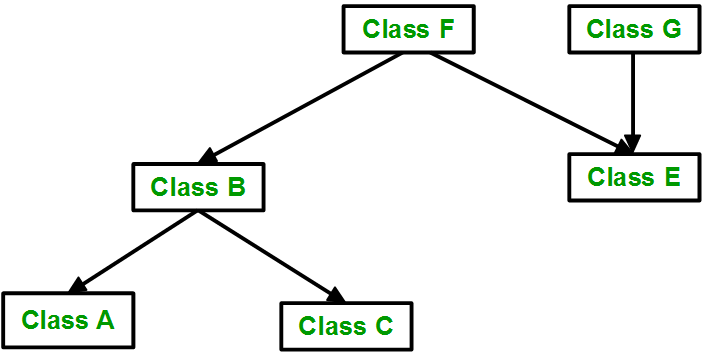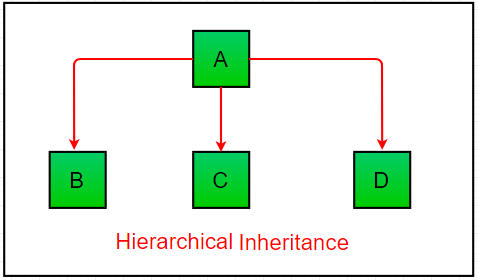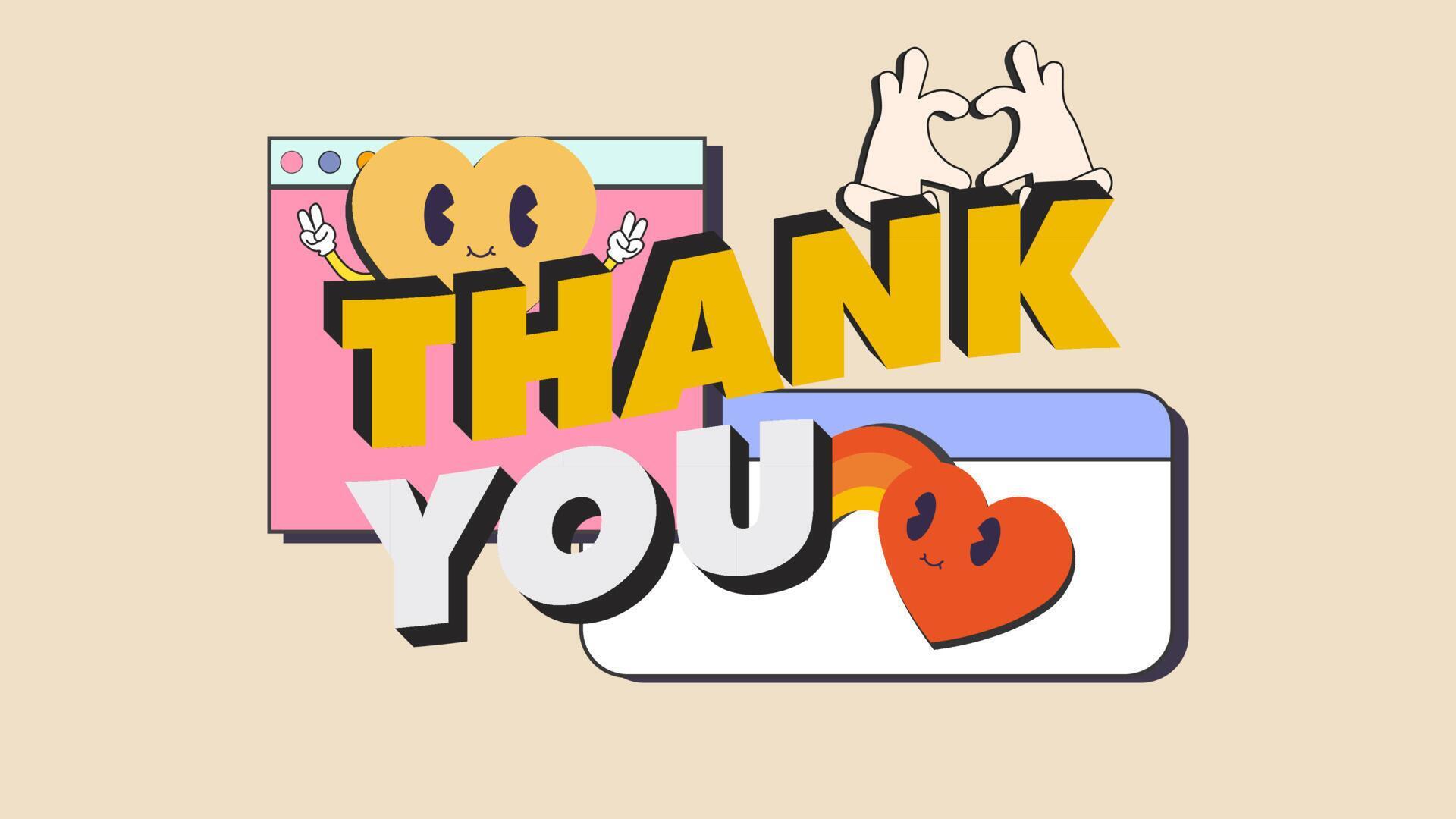Inheritance in Python
Exploring the Concept of Inheritance in Python Programming.
Introduction
Inheritance is a key concept in object-oriented programming that allows classes to inherit attributes and methods from other classes. In Python, inheritance is a powerful tool that can help you write more efficient and maintainable code by reusing existing code and building upon it. Python offers several types of inheritance, including single inheritance, multiple inheritance, multilevel inheritance, hierarchical inheritance, and hybrid inheritance. Each type of inheritance has its own syntax and use cases, and understanding them is crucial for building complex and scalable programs in Python. In this article, we will explore the different types of inheritance in Python and provide examples to help you understand how to use them in your own code.
Definition
When a class derives from another class. The child class will inherit all the public and protected properties and methods from the parent class. In addition, it can have its own properties and methods, this is called inheritance.
General Syntax for Inheritance
class BaseClass:
Body of base class
class DerivedClass(BaseClass):
Body of derived class
The derived class inherits features from the base class where new features can be added to it. This results in the re-usability of code.
Types of Inheritance
Single Inheritance
Multiple Inheritance
Multilevel Inheritance
Hierarchical Inheritance
Hybrid Inheritance
Single Inheritance
Single inheritance is a type of inheritance where a class inherits properties and behaviors from a single-parent class. This is the simplest and most common form of inheritance.
Single inheritance is a powerful tool in Python that allows you to create new classes based on existing classes. It allows you to reuse code, extend it to fit your needs and make it easier to manage complex systems. Understanding single inheritance is an important step in becoming proficient in object-oriented programming in Python.

Syntax
The syntax for single inheritance in Python is straightforward and easy to understand. To create a new class that inherits from a parent class, simply specify the parent class in the class definition, inside the parentheses, like this:
class ChildClass(ParentClass):
# class body
Example
Let's consider a simple example of single inheritance in Python. Consider a class named "Animal" that contains the attributes and behaviors that are common to all animals.
class Animal:
def __init__(self, name, species):
self.name = name
self.species = species
def make_sound(self):
print("Sound made by the animal")
If we want to create a new class for a specific type of animal, such as a dog, we can create a new class named "Dog" that inherits from the Animal class.
class Dog(Animal):
def __init__(self, name, breed):
Animal.__init__(self, name, species="Dog")
self.breed = breed
def make_sound(self):
print("Bark!")
The Dog class inherits all the attributes and behaviors of the Animal class, including the __init__ method and the make_sound method. Additionally, the Dog class has its own __init__ method that adds a new attribute for the breed of the dog, and it also overrides the make_sound method to specify the sound that a dog makes.
Multiple Inheritance
Multiple inheritance is a powerful feature in object-oriented programming that allows a class to inherit attributes and methods from multiple parent classes. This can be useful in situations where a class needs to inherit functionality from multiple sources.

Syntax
In Python, multiple inheritance is implemented by specifying multiple parent classes in the class definition, separated by commas.
class ChildClass(ParentClass1, ParentClass2, ParentClass3):
# class body
In this example, the ChildClass inherits attributes and methods from all three parent classes: ParentClass1, ParentClass2, and ParentClass3.
It's important to note that, in the case of multiple inheritance, Python follows a method resolution order (MRO) to resolve conflicts between methods or attributes from different parent classes. The MRO determines the order in which parent classes are searched for attributes and methods.
Example
class Animal:
def __init__(self, name, species):
self.name = name
self.species = species
def make_sound(self):
print("Sound made by the animal")
class Mammal:
def __init__(self, name, fur_color):
self.name = name
self.fur_color = fur_color
class Dog(Animal, Mammal):
def __init__(self, name, breed, fur_color):
Animal.__init__(self, name, species="Dog")
Mammal.__init__(self, name, fur_color)
self.breed = breed
def make_sound(self):
print("Bark!")
In this example, the Dog class inherits from both the Animal and Mammal classes, so it can use attributes and methods from both parent classes.
Multilevel Inheritance
Multilevel inheritance is a type of inheritance in object-oriented programming where a derived class inherits from another derived class. This type of inheritance allows you to build a hierarchy of classes where one class builds upon another, leading to a more specialized class.
In Python, multilevel inheritance is achieved by using the class hierarchy. The syntax for multilevel inheritance is quite simple and follows the same syntax as single inheritance.

Syntax
class BaseClass:
# Base class code
class DerivedClass1(BaseClass):
# Derived class 1 code
class DerivedClass2(DerivedClass1):
# Derived class 2 code
In the above example, we have three classes: BaseClass, DerivedClass1, and DerivedClass2. The DerivedClass1 class inherits from the BaseClass, and the DerivedClass2 class inherits from the DerivedClass1 class. This creates a hierarchy where DerivedClass2 has access to all the attributes and methods of both DerivedClass1 and BaseClass.
Example
Let's take a look at an example to understand how multilevel inheritance works in Python. Consider the following classes:
class Animal:
def __init__(self, name, species):
self.name = name
self.species = species
def show_details(self):
print(f"Name: {self.name}")
print(f"Species: {self.species}")
class Dog(Animal):
def __init__(self, name, breed):
Animal.__init__(self, name, species="Dog")
self.breed = breed
def show_details(self):
Animal.show_details(self)
print(f"Breed: {self.breed}")
class GoldenRetriever(Dog):
def __init__(self, name, color):
Dog.__init__(self, name, breed="Golden Retriever")
self.color = color
def show_details(self):
Dog.show_details(self)
print(f"Color: {self.color}")
In this example, we have three classes: Animal, Dog, and GoldenRetriever. The Dog class inherits from the Animal class, and the GoldenRetriever class inherits from the Dog class.
Now, when we create an object of the GoldenRetriever class; it has access to all the attributes and methods of the Animal class and the Dog class. We can also see that the GoldenRetriever class has its own attributes and methods that are specific to the class.
dog = GoldenRetriever("Max", "Golden")
dog.show_details()
Output
Name: Max
Species: Dog
Breed: Golden Retriever
Color: Golden
As we can see from the output, the GoldenRetriever object has access to all the attributes and methods of the Animal and Dog classes, and, it has also added its own unique attributes and methods. This is a powerful feature of multilevel inheritance, as it allows you to create more complex and intricate classes by building upon existing ones.
Another important aspect of multilevel inheritance is that it allows you to reuse code and avoid repeating the same logic multiple times. This can lead to better maintainability and readability of your code, as you can abstract away complex logic into base classes and build upon them.
In conclusion, multilevel inheritance is a powerful feature in object-oriented programming that allows you to create complex and intricate classes by building upon existing ones. It provides the benefits of code reuse, maintainability, and readability, while also requiring careful consideration to avoid potential problems.
Hybrid Inheritance
Hybrid inheritance is a combination of multiple inheritance and single inheritance in object-oriented programming. It is a type of inheritance in which multiple inheritance is used to inherit the properties of multiple base classes into a single derived class, and single inheritance is used to inherit the properties of the derived class into a sub-derived class.
In Python, hybrid inheritance can be implemented by creating a class hierarchy, in which a base class is inherited by multiple derived classes, and one of the derived classes is further inherited by a sub-derived class.

Syntax
The syntax for implementing Hybrid Inheritance in Python is the same as for implementing Single Inheritance, Multiple Inheritance, or Hierarchical Inheritance.
Here's the syntax for defining a hybrid inheritance class hierarchy:
class BaseClass1:
# attributes and methods
class BaseClass2:
# attributes and methods
class DerivedClass(BaseClass1, BaseClass2):
# attributes and methods
Example
Consider the example of a Student class that inherits from the Person class, which in turn inherits from the Human class. The Student class also has a Program class that it is associated with.
class Human:
def __init__(self, name, age):
self.name = name
self.age = age
def show_details(self):
print("Name:", self.name)
print("Age:", self.age)
class Person(Human):
def __init__(self, name, age, address):
Human.__init__(self, name, age)
self.address = address
def show_details(self):
Human.show_details(self)
print("Address:", self.address)
class Program:
def __init__(self, program_name, duration):
self.program_name = program_name
self.duration = duration
def show_details(self):
print("Program Name:", self.program_name)
print("Duration:", self.duration)
class Student(Person):
def __init__(self, name, age, address, program):
Person.__init__(self, name, age, address)
self.program = program
def show_details(self):
Person.show_details(self)
self.program.show_details()
In this example, the Student class inherits from the Person class, which in turn inherits from the Human class. The Student class also has an association with the Program class. This is an example of Hybrid Inheritance in action, as it uses both Single Inheritance and Association to achieve the desired inheritance structure.
To create a Student object, we can do the following:
program = Program("Computer Science", 4)
student = Student("John Doe", 25, "123 Main St.", program)
student.show_details()
Output
Name: John Doe
Age: 25
Address: 123 Main St.
Program Name: Computer Science
Duration: 4
As we can see from the output, the Student object has access to all the attributes and methods of the Person and Human classes, as well as the Program class through association.
In this way, hybrid inheritance allows for a flexible and powerful way to inherit attributes and behaviors from multiple classes in a hierarchy or chain.
Hierarchical Inheritance
Hierarchical Inheritance is a type of inheritance in Object-Oriented Programming where multiple subclasses inherit from a single base class. In other words, a single base class acts as a parent class for multiple subclasses. This is a way of establishing relationships between classes in a hierarchical manner.

Here's an example to illustrate the concept of hierarchical inheritance in Python:
class Animal:
def __init__(self, name):
self.name = name
def show_details(self):
print("Name:", self.name)
class Dog(Animal):
def __init__(self, name, breed):
Animal.__init__(self, name)
self.breed = breed
def show_details(self):
Animal.show_details(self)
print("Species: Dog")
print("Breed:", self.breed)
class Cat(Animal):
def __init__(self, name, color):
Animal.__init__(self, name)
self.color = color
def show_details(self):
Animal.show_details(self)
print("Species: Cat")
print("Color:", self.color)
In the above code, the Animal class acts as the base class for two subclasses, Dog and Cat. The Dog class and the Cat class inherits the attributes and methods of the Animal class. However, they can also add their own unique attributes and methods.
Here's an example of creating objects of the Dog and Cat classes and accessing their attributes and methods:
dog = Dog("Max", "Golden Retriever")
dog.show_details()
cat = Cat("Luna", "Black")
cat.show_details()
Output
Name: Max
Species: Dog
Breed: Golden Retriever
Name: Luna
Species: Cat
Color: Black
As we can see from the outputs, the Dog and Cat classes have inherited the attributes and methods of the Animal class, and have also added their own unique attributes and methods.
In conclusion, hierarchical inheritance is a way of establishing relationships between classes in a hierarchical manner. It allows multiple subclasses to inherit from a single base class, which helps in code reuse and organization of code in a more structured manner.
Conclusion
Inheritance is a fundamental concept in object-oriented programming that allows you to create new classes based on existing classes. Python offers a variety of inheritance types, including single inheritance, multiple inheritance, multilevel inheritance, hierarchical inheritance, and hybrid inheritance. Each type of inheritance has its own syntax and use cases. Understanding inheritance is crucial for building complex and scalable programs in Python. By leveraging inheritance, you can reuse code, extend it to fit your needs, and make it easier to manage complex systems. Overall, inheritance is a powerful tool that can help you write more efficient and maintainable code in Python.
Well, that's a wrap for now!! Hope you folks have enriched yourself today with lots of known or unknown concepts. I wish you a great day ahead and till then keep learning and keep exploring!!

